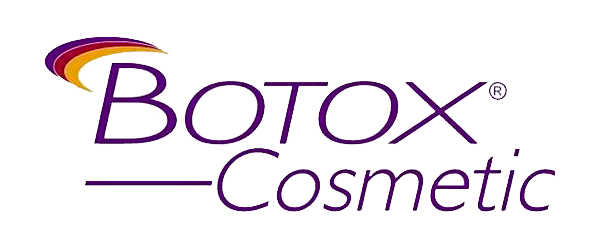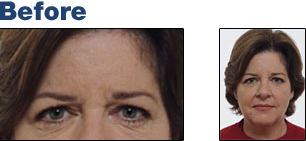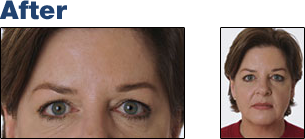 Tallman Eye Associates offers ophthalmic plastic surgeon Metish Kapadia, M.D. PhD for a variety of blepharoplasty and other forms of eyelid surgery as well as Botox injections and facial fillers. He sees patients in Tallman’s Salem, NH; North Andover, MA and Haverhill, MA offices.
Tallman Eye Associates offers ophthalmic plastic surgeon Metish Kapadia, M.D. PhD for a variety of blepharoplasty and other forms of eyelid surgery as well as Botox injections and facial fillers. He sees patients in Tallman’s Salem, NH; North Andover, MA and Haverhill, MA offices.
There are three different conditions which can cause droopy eyelids, each of which is treated differently. Many people with droopy eyelids have a condition known as dermatochalasis, excess upper eyelid skin. A mild to moderate amount of excess eyelid skin results in a tired, sad appearance. An advanced amount of excess eyelid skin can block parts of a patient's peripheral vision, especially at the top and sides. Dermatochalasis is corrected by removal of excess skin through a procedure known as upper eyelid blepharoplasty, commonly known as eye lift. Upper eyelid blepharoplasty surgery may be performed for cosmetic reasons, to improve a patient's appearance, or for functional reasons, to improve a patient's peripheral vision.
Ptosis refers to an abnormal position of the eyelid margin. A person may be born with drooping of either one of both eyelids, a condition known as congenital ptosis. However, the vast majority of patients have normal eyelids when they are born and develop droopy eyelids in adulthood, a condition known as acquired ptosis. Surgery to correct ptosis is more involved than blepharoplasty surgery and is usually only performed by eyelid surgery specialists. Ptosis surgery requires adjusting the position of one of the two muscles which elevate the eyelid. Dr. Kapadia is one of only two surgeons in the Boston area, and one of the few across the country, who can perform this surgery entirely through an internal approach on the back of the eyelid.
The third factor to consider when evaluating a patient with droopy eyelids is the position of the brow. A droopy eyebrow is referred to as brow ptosis and often coexists with dermatochalasis and ptosis. Brow ptosis is repaired with a brow lift, which can be performed in a number of different ways, on which Dr. Kapadia will consult with you.
Dark circles under the eyes can represent a number of different problems, each of which is treated differently.
The space behind the eye, known as the orbit, contains a significant amount of fatty tissue. The best treatment for this type of problem is usually removal of excess fat with a lower eyelid blepharoplasty procedure. Excess skin can be trimmed and tightened at the same time.
Dark circles under the eyes can be caused by a depression or hollowness in the lower eyelids. The modern way to treat this hollowness is with injectable fillers such as Restylane or Juvederm. These treatments are less invasive than traditional surgery and typically last 9-12 months.
Dark circles under the eyes can sometimes be caused by excess pigmentation of the eyelid skin. Of the three causes of dark circles listed on this page, hyperpigmentation is actually the least common. Many patients feel that they have excess pigmentation, but this is often an illusion caused by shadows from excess eyelid fat or hollowness at the orbital rim.
Excess eyelid pigmentation, when present, can be treated with bleaching creams such as hydroquinone. However, the results of this type of treatment are almost always suboptimal. Eyelid pigmentation is an unfortunate problem which is very difficult to treat. Sometimes patients who have excess pigmentation may also have excess fat or hollowness in their lower eyelids and treating these conditions may help improve their overall appearance.
Many patients complain of having “bags” under their eyes, which make them look tired. Bags under the eyes may get worse when you are tired or have allergies, but the real issue is a structural problem in the anatomy of the eyelids. Depending on the specific problem and patient wishes, bags under the eyes may be treated using surgery (lower blepharoplasty) or non-surgical approaches (non-surgical blepharoplasty).

Botox treatments provide a great way for many people to improve facial wrinkles without having surgery. Botox is the most common cosmetic treatment performed by physicians in the United States, with over 3.8 million procedures done each year.


Is Botox safe?
Yes. Botox has an excellent safety profile. More than 6 million Botox procedures were performed in the United States in 2012, with several million additional procedures performed in other countries. If Botox were not safe, it would have been taken off the market many years ago. Botox has been used for cosmetic treatments since the early 1990s and received official FDA approval for cosmetic use more than 10 years ago. Millions of people have been safely treated over more than 20 years with a very low rate of serious adverse events. In all likelihood, many people you know regularly receive Botox treatments even if they choose to keep this information private. Feel free to discuss the safety of Botox with your doctors (who may be Botox patients themselves!).
How does Botox work?
Botox helps relax overactive muscles. As we age, overactive facial expressions can lead to prominent lines and wrinkles. By relaxing these muscles, Botox can help lesson lines and wrinkles and help create a more youthful appearance.
Is Botox a poison?
Botox is a medicine which helps relax overactive muscles. In high doses, many medicines (including Botox) can be poisonous. The dose of Botox used for cosmetic purposes is relatively low, and there are very few long-term complications associated with this amount of Botox.
What are the main side effects associated with Botox treatments?
Bruising and redness at the injections sites are probably the most common side effects. The most common complication arising from Botox treatment is a drooping eyelid. In trained hands, this occurs in less than one in several hundred patients. This type of side effect is temporary and goes away as the Botox wears off.
Do I need to take time off of work to have Botox injections?
Most patients go right to work or other activities after a Botox treatment. Bruising can sometimes occur, but is usually mild and can often be covered with makeup.

Restylane and Juvederm are facial fillers used to help reduce the signs of aging without surgery. These substances are made of hyaluronic acid, a naturally occurring substance in the body.
.png) Restylane and Juvederm are two different brands of hyaluronic acid designed for injection under the skin. They help fill hollows in the face which result from aging, such as lines under the eyes (also known as tear trough deformity), smile lines and marionette lines.
Restylane and Juvederm are two different brands of hyaluronic acid designed for injection under the skin. They help fill hollows in the face which result from aging, such as lines under the eyes (also known as tear trough deformity), smile lines and marionette lines.
In addition to cosmetic surgery, Dr. Kapadia has a large practice devoted to functional and reconstructive oculoplastic surgery. In the non-cosmetic eyelid surgery realm, he sees patients who have medical problems with their eyelids which cause them ocular discomfort, eye irritation or difficulty seeing.

Tallman Eye Associates strives for excellence in Ophthalmology and Laser Vision Correction. Because we offer procedures that cover so many aspects of eye care we thought you might be interested in hearing the experiences of our patients.
